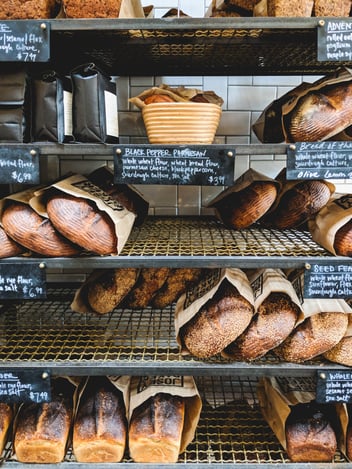How to stop plate waste hurting your profits
End Food Waste Australia recently partnered with the NSW Environmental Protection Authority to shine a light on food waste in the catering industry.

Food waste is a big problem, and there are steps that venues can take that’ll make a significant difference.
But the problem becomes even more tangible when it’s viewed from a monetary perspective. Imagine $4.20 per plate coming back to your venue. Would it be enough to fund a few chef shifts? Bolster your business against quiet periods? Would it pay for next week’s dairy order?
End Food Waste Australia recently partnered with the NSW EPA to shine a light on food waste in the catering industry which contributes to the hospitality industry's wastage of 1.2 million tonnes of food each year – the equivalent of 4.6 million meals per day.

We found that the average amount thrown away per cover served in catering is $4.20, or 299g of food. As a single plate, it may not seem like much. Multiply it by a hundred or thousand covers, and it becomes pretty clear how plate waste can hurt your profits.
And while these findings come from the catering industry, this information is an applicable guide for venues around the country
Food waste can happen at different stages
Food waste isn’t just happening at the preparation stage. It’s happening from the moment you receive your ingredients, in storage, prep, when you serve food, and what comes back on plates.
Plate waste is food that is wasted after reaching the consumer i.e. food taken or served, but not eaten. It accounts for 28% of catering food waste.
Serving waste is food that is wasted after being prepared and offered to the consumer but is not taken eg. bain marie waste and table bread rolls. It accounts for 30% of food waste.
Spoilage waste is food that’s wasted prior to kitchen preparation e.g., due to overordering, exceeding use by date, and damaged products and accounts for 17% of food waste.
Finally, preparation waste is food that’s wasted during the preparation stage. This may include items such as excess trim from meat and vegetables, and unused portions of perishable ingredients. It accounts for 25% of food waste.
Steps to tackle food waste

1. Get everyone onboard: Talk about food waste with your staff and colleagues. Firstly acknowledge you have food waste. Set goals for how much food waste you want to prevent and what you need to do to reduce it. Reducing food waste is a team effort and a shift in culture and processes needs to happen.
If there is resistance, education is key. Why does the change need to happen from both a global and business level? What difference could changes make firstly to the business, and then globally?
2. Measure and monitor food waste: Understand the problem and the cost. By separating your food waste, you’ll understand where the food waste is happening. This can be as simple as setting up an extra bin. Start measuring in a way that is achievable in your business - you’ll find that just one week’s data can provide a lot of information.
3. Take action: Once you know how much food you are wasting, and at what stage, it’s time to do something about it. Make changes that work for your venue, and where you see waste happening. These actions can range from discussing catering contracts with clients, designing menus with fewer choices, through to using smaller plates during service.
Should you donate to food rescue organisations?

If food waste cannot be prevented, think about donation or recycling. There’s a lot of misinformation around food donation and recycling, with many businesses afraid of repercussions if the food is contaminated.
However, donation to food rescue charities is more possible than foodservice businesses believe, and donating food helps keep it in the food supply chain - thus reducing food waste. Every State and Territory in Australia has regulations that protect food donors from liability if the food is donated in good faith and has fulfilled some reasonable conditions. Click here for more information.
End Food Waste Australia recently partnered with the NSW EPA to shine a light on food waste on the catering industry which contributes to the hospitality industry's wastage of 1.2 million tonnes of food each year – the equivalent of 4.6 million meals per day.
Ending food waste starts with us all. For more practical tips on how to tackle plate waste, download our guides: Catering Toolkit or visit End Food Waste Australia.
Categories
Sustainability
Emil is Technical Specialist at End Food Waste Australia. He uses a people-first approach to drive food waste reduction and innovation in food manufacturing and foodservice.







